Explore world-class healthcare and cultural wonders with Medical Tourism in Egypt. Experience top-tier medical facilities amidst the rich historical tapestry of this ancient land, combining quality treatment with the allure of Egypt's iconic landmarks and warm hospitality.

Medical Tourism in Egypt is a great way to seek healing and regain your spirit. The lands and waters of Egypt are famous for their healing powers and for offering a non-traditional form of therapy. This article's main purpose is to highlight all the best places for medical tourism in Egypt. This article was written by our skilled team of tour operators, tour guides, and travel consultants.
There are so many types of tourism in Egypt, mainly because Egypt is rich with so many impressive places and tens of remarkable sightseeing to visit, and because of that, tourists come from all parts of the world to enjoy the amazing beauty of those places, do tens of different activities and have the type of tourism that they hope including cultural, entertainment, and medical tourism. Egypt is known to occupy a very notable position in “Therapeutic Tourism” all over the world.
In addition to enjoying visiting the incredible historical attractions that are spread all around Egypt's great cities, tourists come to have medical treatment throughout Egypt’s hospitals and natural spots based on the nature of the disease or the complaint.
There are many different medical departments in Egyptian hospitals, including Neurosurgery, Plastic Surgeries, Cardiology, Gynecology, Ophthalmology, Gastroenterology, and many other departments that cover the majority of treatments.
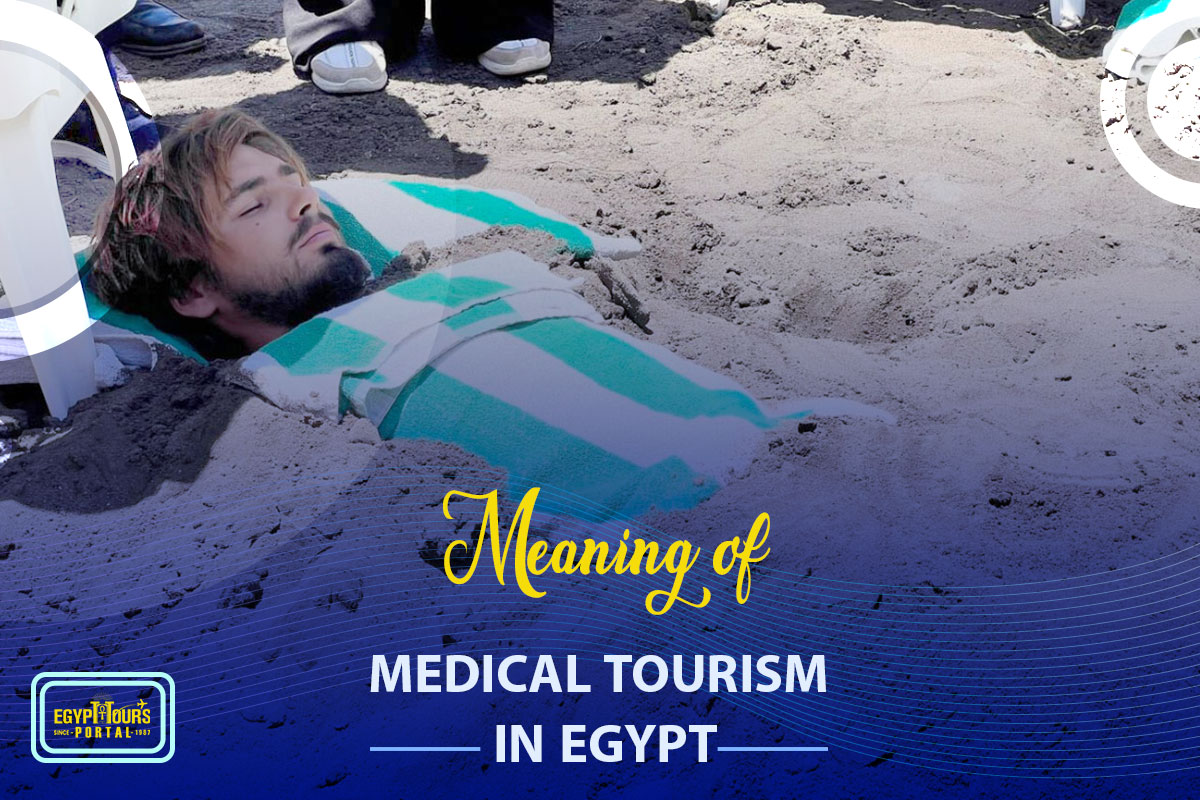
Medical Tourism is practiced by tourists who come mainly to Egypt to visit its glorious attractions, which provide the best natural remedies depending on the natural sources in the area, such as mineral water springs, hot sand, and sulfur water baths. Dozens of tourists come especially to Egypt for that purpose since it is listed among the top countries that encourage medical tourism in addition to providing lots of recreation, entertainment, and relaxation methods for its visitors.
Therapeutic Tourism in Egypt is famous for its sulfur and mineral waters, as well as its dry, moisture-free atmosphere. Travelers come from different parts of the world to achieve recreation and healing, enjoy the most of their leisure time to make all the members of a family happy, and pay a small amount of money. The best thing about enjoying medical tourism in Egypt is that treatment costs are much lower than having it anywhere else, and that is why it is the most enjoyable option for tourists who see treatment.
Another important aspect of medical tourism is that if they are patients and suffer from a specific issue or disease, they need to head to a different place to change the atmosphere and enjoy the natural beauty around them. This has the best ability to change one’s mental & physical state.
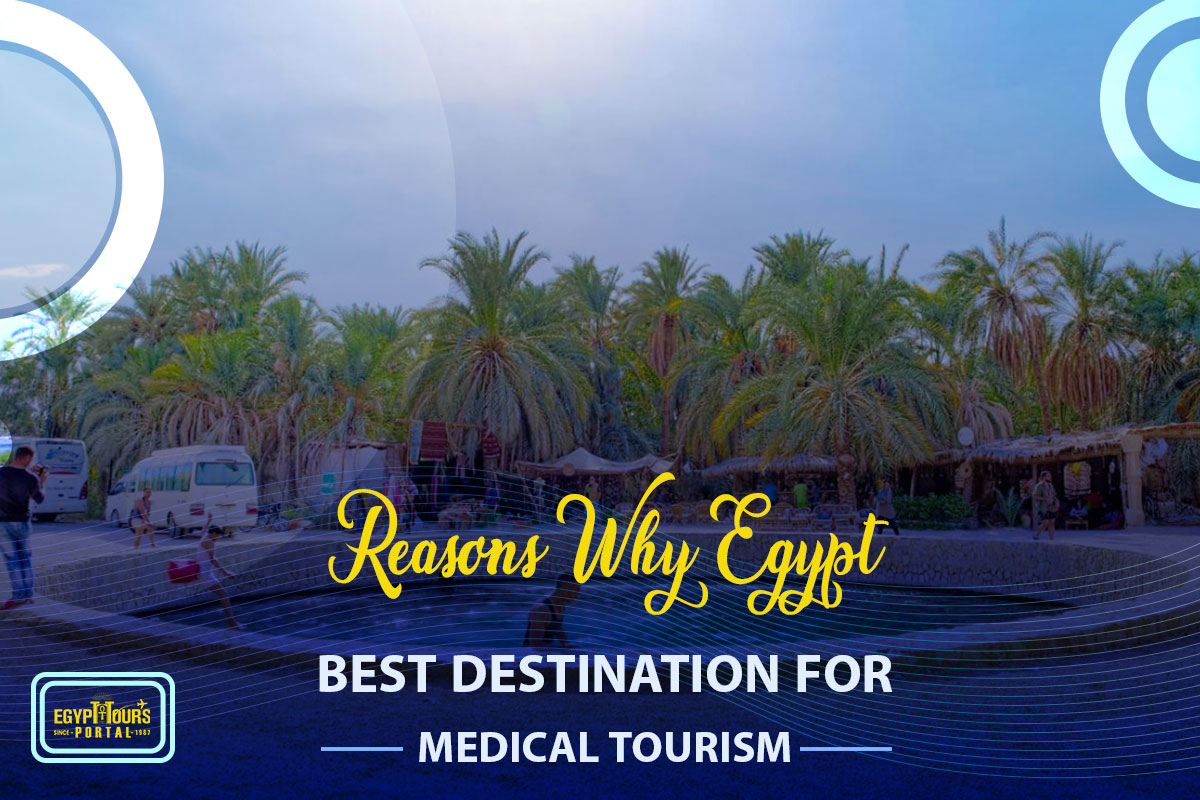
Egypt is a true natural heaven filled with countless attractions that will definitely heal your mind and soul. Egypt's allure for medical tourism dates back to ancient times, thanks to its soil's richness in materials for disease treatments. The country now stands as a burgeoning hub for medical tourism, offering diverse alternative therapies like sulfur spring and black sand treatments that effectively alleviate stress and reduce aches and pains. You can read more about valuable information and facts regarding medicine in ancient Egypt and how physicians used to confront diseases and epidemics in ancient Egypt.
Modern Egypt maintains exceptional treatment standards and provides round-the-clock, high-quality healthcare. The medical professionals in these facilities are highly trained and contribute to Egypt's reputation as a prime destination for medical tourists worldwide. This influx of medical tourism not only enhances healthcare accessibility but also significantly bolsters the country's economy. Egypt has developed a spectrum of alternative therapies over the years with the help of resorts, healing centers, and spas that offer sulfur spring therapy, black sand therapy, and other renowned treatments.
These alternatives are not only beneficial for stress relief but also prove effective in addressing respiratory diseases, kidney problems, digestive issues, rheumatism, arthritis, joint pain, and more. The unique climate in various Egyptian locations further enhances the therapeutic effects, providing a holistic approach to health and well-being for medical tourists from around the globe.
Egypt has always been recognized as a much-recommended destination for Medical tourism because of its mineral waters, rivers, oases, and soil, which have lots of essential materials that assist in healing, like chemical minerals.
The most well-known site of treatment in Egypt is the Bir Wahid & Cleopatra Spring, which is located in Siwa Oasis, because of its therapeutic mud and minerals sulfur springs. Those springs also help in the treatment of skin, respiratory, and rheumatism diseases. Here is a list of the most recommended places for medical tourism in Egypt:

Kharga Oasis is located in south Assiut, and it has inside the best deep wells that have lots of therapeutic benefits, including Nasser Wells and Bulaq Wells, which are self-flowing deep wells, stems at a depth of 1000 meters and a temperature of 28 ° C, that surrounded by areas of greenery.
Laboratory analysis has proven that these wells contain mineralized water with high therapeutic benefits. You will be able to get treatment there for chronic pain, kidney stones, rheumatic diseases, psoriasis, and disorders of the digestive system.
The Kharga Oasis isn't merely a geographical marvel; it stands as a testament to nature's healing prowess. Visitors flock here not just for its picturesque landscape but also to partake in the revitalizing and restorative benefits offered by these miraculous deep wells. The serene ambiance, coupled with the therapeutic properties of these waters, creates an immersive and rejuvenating experience, making it a sought-after destination for wellness seekers and explorers alike.

Those are some of the most well-known oases in Egypt that are located in the Western Desert. Bahariya Oasis is a group of Egyptian oases located in the Western Desert 350 km southwest of Alexandria, 370 km from Cairo, where it belongs to Giza Governorate, and the oval valley within which the oases are located extends from the northeast to the southwest with a length of 94 km and a width of 42 km With an area of approximately 2000 square kilometers and is surrounded by mountains and many water springs.
There is a spot there that is famous for healing and it is called "Gabel Dakrour". It contains about 400 sulfur and mineral water. There, you will find the best natural means to heal climatic properties, especially for patients who suffer from rheumatic issues, skin diseases, and gastritis from the famous Peshmo.
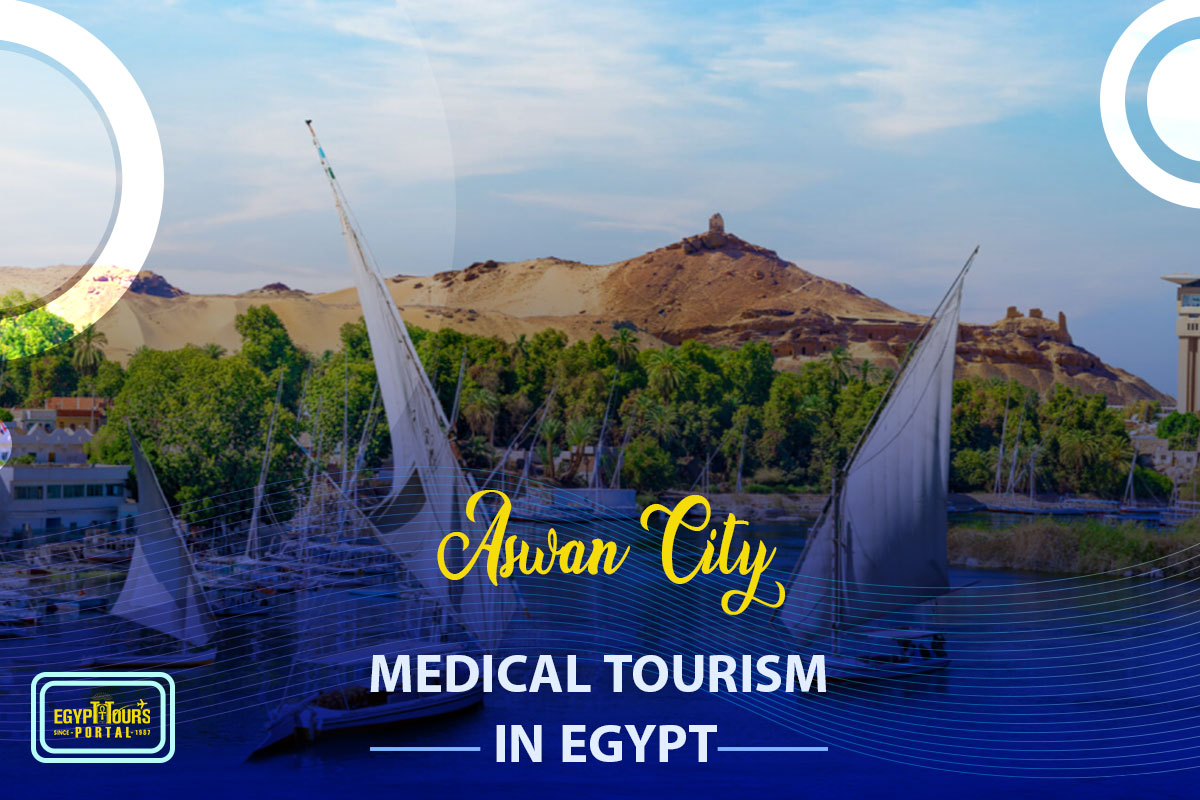
Aswan is a famous tourist city located in Upper Egypt, and besides its majestic ancient & modern attractions located on the banks of the Nile River, it has the most convenient atmosphere that is very relaxing and suitable for patients who suffer from respiratory diseases and kidney diseases.
There are two centers in the city for treatment by water & sand. It is particularly successful in treating rheumatoids due to salt in seawater and the ultraviolet rays besides the usage of natural black sand.

Siwa Oasis has the most natural erosion factors that enable it to be the most visited natural treatment spot in Egypt. It contains about 230 natural freshwater springs and more than naturally flowing 1000 wells. Agriculture is the main Activity of the oasis, and it depends mainly on the groundwater that outflows from these wells and springs, giving a total annual discharge of about 255 million cubic meters of natural water, while the remainder goes to the natural lakes of Siwa Oasis.
These springs include Ayn Abu Shrouf, Ayn Safy, and Ayn Zaytun. In Siwa Oasis is the Cleopatra Bath which is known as the spring of the sun; A.K.A "Ayn al-Hammam" is located 700 m south on the pathway leading to the Temple of Umm Ubaydah. It is a stone pool fed by natural spring water; Cleopatra VII came to Siwa to visit Oracle and bathe in the spring, which now bears her name.
There are so many water springs there, in addition to saline lakes, that help in the treatment of lots of diseases. Located 3 km southeast of Siwa Oasis is Dakrour Mountain, which is known for its healing climatic properties. It is famous for the healing properties of its hot sands since ancient times, especially for rheumatic patients.

Ras Sedr, a captivating tourist hub nestled within the Sinai Governorate and situated perfectly along the mesmerizing Suez Gulf, beckons travelers with its allure. The renowned site, "Ouyoon Moussa" or Moussa’s wells, stands as a cherished relic tracing back to ancient Egypt's grandeur, serving witness to the storied arrivals of Prophet Moses, the Greeks, the Romans, and even Jesus Christ himself.
This remarkable town has gained widespread acclaim for its sprawling sandy coastlines, offering an idyllic retreat for beach lovers seeking solace in the gentle lapping of the sea against the shore. Its distinction lies not only in the golden sands that stretch for miles but also in the purity of its sea salt, a hallmark of its pristine marine environment boasting notably minimal seaweed presence.

The site in Tor Sinai, known for its natural pool fed by five sources, offers not only a serene natural setting but also therapeutic benefits. The mineral-rich water, with temperatures reaching 37 degrees Celsius, holds significant healing properties attributed to its sulfur content.
This unique composition has been historically acclaimed for its therapeutic effects, aiding in the treatment of various ailments. The sulfur-infused waters are believed to alleviate skin conditions such as psoriasis and eczema. Additionally, the high mineral content in the water is said to be beneficial for joint and muscle pain, making it a sought-after destination for individuals seeking natural remedies for such issues.
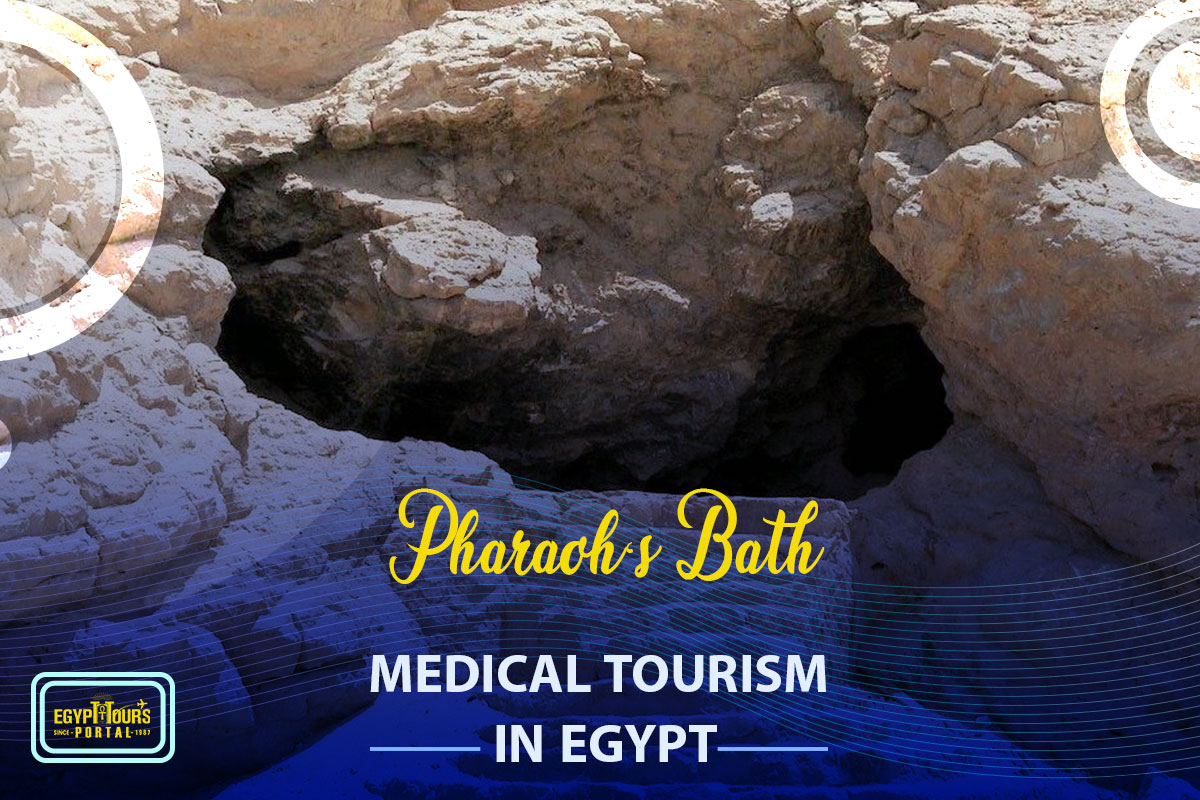
Pharaoh's Bath, a hidden gem nestled approximately 250 kilometers from Cairo along the scenic Gulf of Suez, is a captivating natural wonder. The allure of this place lies in its warm sulfured water springs, maintaining a consistent temperature of 27 degrees Celsius throughout the year. These springs have long been regarded for their therapeutic properties, drawing locals and tourists alike seeking relaxation and rejuvenation.
Adjacent to these soothing springs lies a remarkable feature, an intricately carved cave within the mountainside. This cavernous enclave serves as a unique rock sauna, harnessing the natural emission of heat generated by the hot sulfured water streaming from the depths of the cave. The synergy of the warm, mineral-rich water and the naturally occurring sauna effect creates an immersive experience that's both restorative and deeply indulgent for visitors.

Bir Sitta, also known as the Sixth Well, holds a mystical allure, drawing visitors for its unique natural features. Situated amidst the tranquil expanse, this self-flowing well stands as an oasis of serenity just six kilometers west of El Farafra city in Egypt. Its waters, maintaining a steady temperature of approximately 24°C year-round, possess the therapeutic qualities of sulfurous hot springs.
The well's charm lies not only in its temperature but also in the enchanting manner in which the water flows. Cascading into a jacuzzi-sized concrete pool, it creates a soothing and inviting ambiance. Beyond the pool, the water spills out into a spacious tank, forming an ideal setting for relaxation and rejuvenation.

The Fayoum is a natural depression extending over 12,000 km2 that was formed by wind erosion ca 1.8 million years ago and fully explored in 1939. It is situated 100 km southwest of Cairo and separated from the Nile by a 25 km strip of desert.
In Fayoum is Wadi El Rayan, which is an uninhabited depression in Egypt’s Western Desert, situated southwest of Cairo, at 60 m below sea level, famous for containing a high biological diversity with a hot and dry Saharan climate with scanty winter that makes it ideal for Medical Tourism in Egypt.
There are 28 protectorates in Egypt, and here is a list of the most famous 23 national parks in Egypt. Read more!!!
Read MoreWadi El Rayan is a number of Sabkhas, sand flats, sand dunes, wetlands, "Man-made Lakes" springs like three natural El Rayan springs, located below Minqar El Rayan at a site known as Oyun El Rayan or spring area, with water believed to flow from Nubian sandstone strata.

Al-Ain al-Sokhna resort is known as "The Hot Spring" which is a town in the Suez Governorate along the western shore of the Red Sea's Gulf of Suez, which is positioned 55 kilometers south of Suez and approximately 120 kilometers east of Cairo. Recent archaeological excavations have revealed an ancient Egyptian port and settlement in the area, which was discovered in 1999, showcasing its importance in connecting Sinai's mining areas with Memphis, 120 kilometers across the Eastern Desert, crucial for turquoise and copper. The port's maritime role dates back to the Old Kingdom of Egypt (2700 - 2500 BC), with seafaring expeditions organized on the Red Sea.
Throughout the Middle Kingdom of ancient Egypt (2040 - 1782 BC), the port remained active for trade and expeditions to the Sinai mining regions. The historical legacy of Al-Ain al-Sokhna unfolds through its role in trade, expeditions, and the connection between mining areas and major settlements in ancient Egypt. Ain Sokhna is an epic resort today where everyone can use all the natural waters and sands rich with minerals to remedy their bodies in the most magical way possible. The resort has many spas and health centers which will make your time a true healing memory filled with bliss and peace.

Port Safaga is renowned for its rich history, picturesque setting, and therapeutic resources, and stands as a unique destination where ancient charm and modern healing converge. It is a captivating town on the Red Sea coast in Egypt located 53 km south of Hurghada, which was established between 282 BC and 268 BC by Satyrus; it was named Philotera in honor of the deceased sister of Pharaoh Ptolemy II Philadelphus. Safaga thrives as an essential phosphates export center, boasting numerous phosphate mines connected to Qena in Upper Egypt by a 164 km paved road. This coastal gem is not just a port but a tourist haven, featuring bungalows and rest houses, including the 48-room Safaga Hotel. Beyond its historical roots, Safaga has evolved into a therapeutic tourist center, drawing international visitors seeking the healing properties of its unique environment.
Safaga's allure lies not only in its phosphate riches but also in its burgeoning medical tourism industry. The region's black sand, warm water, and abundant sunshine contribute to its reputation as a destination for holistic treatments. Foreigners from around the world are drawn to Safaga for non-chemical and natural therapies, leveraging the therapeutic benefits of black sand with its high sea salinity, ultraviolet rays, and medicinal plants. The black sand along with gold salts found in the sand, has proven effective in treating rheumatoid diseases. The sand's unique heat communication properties help soothe the skin and calm the immune system, offering relief for conditions like psoriasis and rheumatoid arthritis.

Medical Helwan Center for Sulfur, Rheumatism, and Natural Medicine is a natural sanctuary where ancient sulfur springs and modern medical expertise converge, offering a holistic haven for those seeking relief from diverse health challenges. It is found thirty kilometers from Cairo in the city of Helwan and has emerged as the finest medical tourism haven with a unique blend of therapeutic offerings. It is elevated forty meters above sea level. Helwan boasts a dry atmosphere and a humidity rate that does not exceed 58%. What sets it apart is its sulfur springs, unparalleled globally in purity and therapeutic benefits, making it a prime location for holistic healing.
The medical journey in Helwan traces back to 1899, when the use of its water for treatment commenced. Fast forward to 1955, the development of baths marked a significant step, culminating in the establishment of the Helwan Center for Sulfur Physiotherapy and the treatment of pain and rheumatic diseases. This center was designed in elegant Arab-Islamic style, which served as a refuge for hospitalization and convalescence. Helwan Medical Center addresses a spectrum of ailments, including spinal pain, nerve inflammation, chronic respiratory diseases, paralysis, joint stiffness, neurological and psychiatric conditions, chronic gout, skin diseases, and circulatory issues. The center extends its expertise to inflammation-related infertility, emphasizing its comprehensive approach to healthcare.
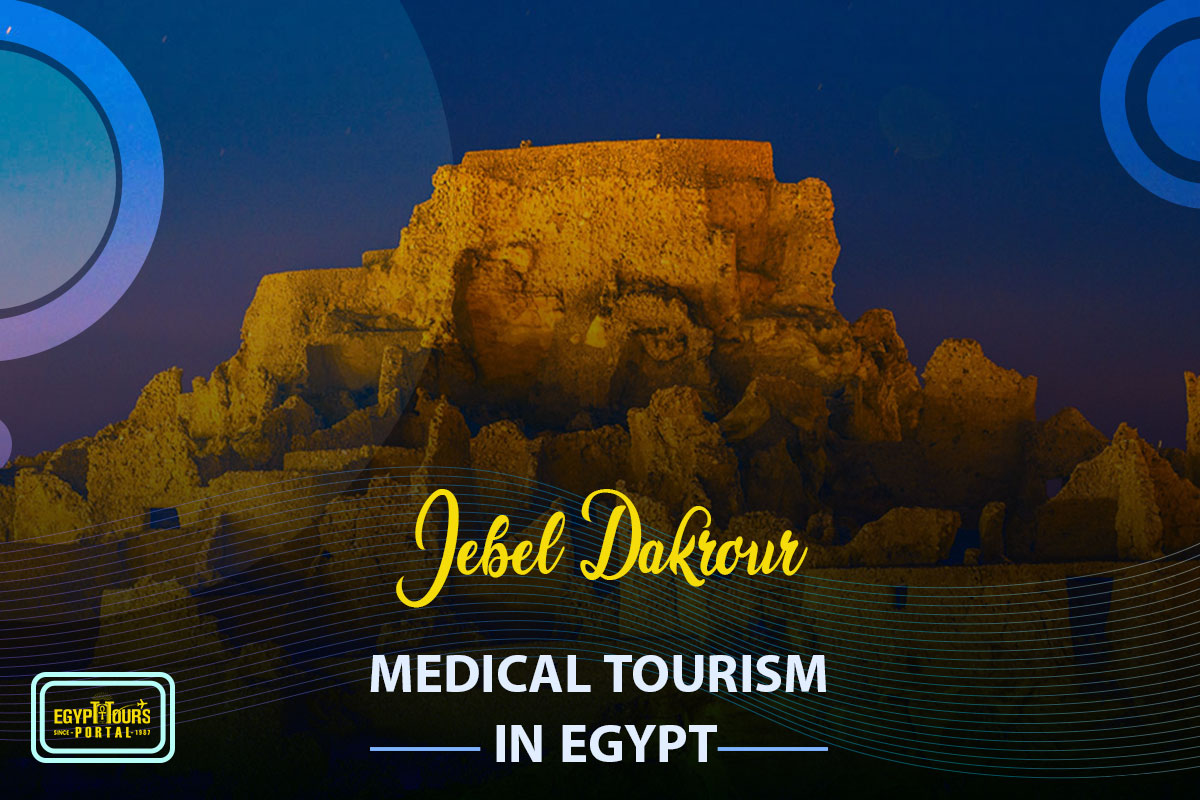
Hospitalization in Jebel Dakrour become a beacon of hope for those seeking not just treatment but a holistic retreat, blending natural wonders with specialized medical care in a serene setting. Dakrour Mountain found southeast of Siwa, stands as a therapeutic haven that draws people from far and wide despite the 12-hour journey from Cairo. The allure lies in the hot sands where individuals bury themselves, leaving only their heads exposed, for 20 minutes, repeating this ritual 3 to 5 times a day during the scorching summer heat.
The anticipation of magical results has turned Dakrour Mountain into a sought-after destination for rejuvenation and recovery. At the heart of this healing landscape is Menaville Spa, attracting patients globally seeking relief from conditions like psoriasis and rheumatoid arthritis. The spa's highly trained and qualified team of specialists crafts individualized treatment programs catering to each patient's unique needs. Beyond medical expertise, visitors can immerse themselves in the therapeutic benefits of the hotel's natural black sand, enhancing the overall healing experience.
Egypt is filled with wonders, and you won't know them unless you arrange an Egypt classic tour with experts to enjoy the real beauty of such an exceptional land and enjoy tours all around its hypnotic cities.
Private 4 Days Cairo Tour Packages for New Zealander Travelers 4 days Cairo Egypt To...
Tour Location: Cairo – Giza...
5 Days Cairo and Alexandria Tour Package For New Zealander Travelers 5 days Cairo an...
Tour Location: Cairo/Giza/Alexandria...
6 Days Cairo, Luxor & Aswan Tour Package For New Zealander Travelers 6 days Cair...
Tour Location: Cairo/Giza/Aswan/Luxor...
Amazing 7 Days Cairo and Hurghada Holiday for New Zealander Travelers 7 Days Cairo &...
Tour Location: Cairo – Giza – Hurgh...
There are many natural tourist areas in Egypt that play a key role in medical tourism that include 16 inland and coastal locations, where natural treatments for many diseases are available such as Helwan, Ain Assera, Ain Sokhna, Hurghada, Fayoum, Oasis, Aswan, Sinai, and Safaga
The entire country of Egypt deserve to be explored with its every heavenly detail but there are places that must be seen before any other such as the breathtaking Hurghada's red sea, The wonders of Cairo the pyramids of Giza, the great sphinx, the Egyptian Museum, Khan El Khalili Bazaar, the wonders of Luxor like Valley of the Kings, Karnak & Hatshepsut temple and the wonders of Aswan such as Abu Simbel temples, Philea temple, Unfinished obelisk and The Wonders of Alexandria like Qaitbat Citadel, Pompey's Pillar and Alexandria Library. Read more about the best places to visit in Egypt.
If you want to apply for a Visa On Arrival that lasts for 30 days then you should be one of the eligible countries, have a valid passport with at least 6 months remaining and pay 25$ USD in cash, as for the E-Visa for 30 day you should have a valid passport for at least 8 months, complete the online application, pay the e-visa fee then print the e-visa to later be presented to the airport border guard. You could also be one of the lucky ones who can obtain a free visa for 90 days. Read more about Egypt travel visa.
Egypt has a variety of delicious cuisines but we recommend “Ful & Ta’meya (Fava Beans and Falafel)”, Mulukhiya, “Koshary”, a traditional Egyptian pasta dish, and Kebab & Kofta, the Egyptian traditional meat dish.
The best time to travel to Egypt is during the winter from September to April as the climate becomes a little tropical accompanied by a magical atmosphere of warm weather with a winter breeze. You will be notified in the week of your trip if the Climate is unsafe and if any changes have been made.
You should pack everything you could ever need in a small bag so you could move easily between your destinations.
We have been creating the finest vacations for more than 20 years around the most majestic destinations in Egypt. Our staff consists of the best operators, guides and drivers who dedicate all of their time & effort to make you have the perfect vacation. All of our tours are customized by Travel, Financial & Time consultants to fit your every possible need during your vacation. It doesn't go without saying that your safety and comfort are our main priority and all of our resources will be directed to provide the finest atmosphere until you return home.
You will feel safe in Egypt as the current atmosphere of the country is quite peaceful after the government took powerful measures like restructuring the entire tourist police to include all the important and tourist attractions in Egypt. Read more about is it safe to travel to Egypt.
Wear whatever feels right and comfortable. It is advised to wear something light and comfortable footwear like a closed-toe shoe to sustain the terrain of Egypt. Put on sun block during your time in Egypt in the summer to protect yourself from the sun.
The best activity is by far boarding a Nile Cruise between Luxor and Aswan or Vise Versa. Witness the beauty of Egypt from a hot balloon or a plane and try all the delicious Egyptian cuisines and drinks plus shopping in old Cairo. Explore the allure and wonders of the red sea in the magical city resorts of Egypt like Hurghada and many more by diving and snorkeling in the marine life or Hurghada. Behold the mesmerizing western desert by a safari trip under the heavenly Egyptian skies.
There are a lot of public holidays in Egypt too many to count either religious or nation, the most important festivals are the holy month of Ramadan which ends with Eid Al Fitr, Christmas and new years eve. Read more about festivals & publich holidays in Egypt.
Egypt is considered to be one of the most liberal Islamic countries but it has become a little bit conservative in the last couple of decades so it is advised to avoid showing your chest, shoulders or legs below the knees.
Arabic is the official language and Most Egyptians, who live in the cities, speak or understand English or at least some English words or phrases. Fewer Egyptians can speak French, Italian, Spanish, and German. Professional tour guides, who work in the tourism sector, are equipped to handle visitors who cannot speak Arabic and they will speak enough English and other languages to fulfill the needs of all our clients.
The fastest way is a car, of course, a taxi. If you are in Cairo ride a white taxi to move faster or you could board the fastest way of transportation in Egypt metro if the roads are in rush hour.
The temperature in Egypt ranges from 37c to 14 c. Summer in Egypt is somehow hot but sometimes it becomes cold at night and winter is cool and mild. The average of low temperatures vary from 9.5 °C in the wintertime to 23 °C in the summertime and the average high temperatures vary from 17 °C in the wintertime to 32 °C in the summertime. The temperature is moderate all along the coasts.
It is the home of everything a traveler might be looking for from amazing historical sites dating to more than 4000 years to enchanting city resorts & beaches. You will live the vacation you deserve as Egypt has everything you could possibly imagine.









